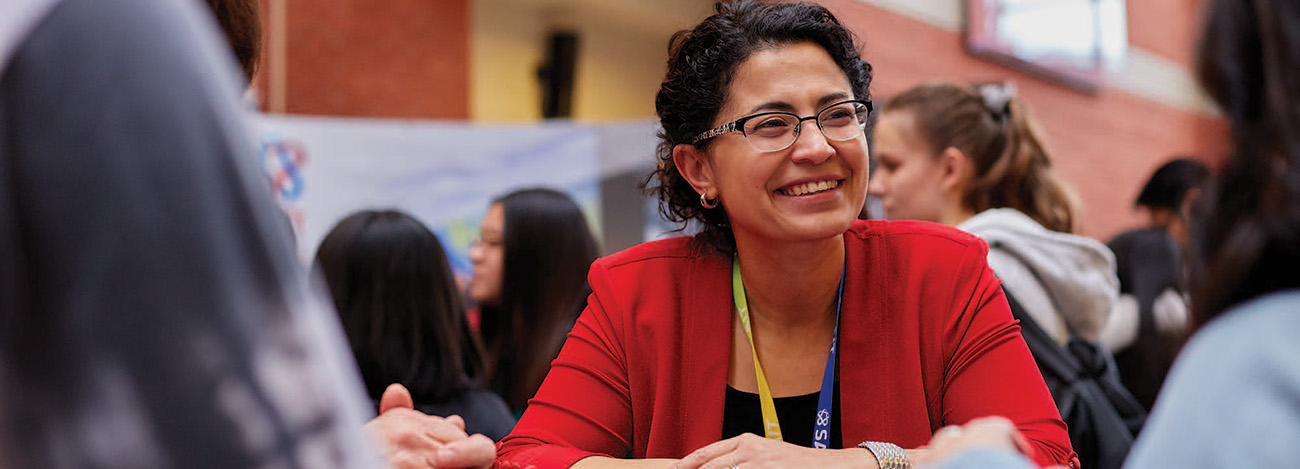SAIT follows its ‘first’ principles to support equity

Commitment to equity, diversity and inclusion is just one of the reasons SAIT was named an Alberta Top Employer for the 13th time
For Felicia Adeniyi, diversity and inclusion aren’t just goals, they’re her job. As an officer in the Community and Belonging department at the Southern Alberta Institute of Technology (SAIT), she says that they were the first thing on her mind when she applied to be an administrative assistant at the
Calgary post-secondary institution.
“I needed to see what they were doing right,” she says, “to see if their values aligned with my values before applying to the organization. I wanted to be in an organization where I’d have a great experience, and where an open-door policy is being practised.”
With over a century of history and a venerable campus overlooking downtown Calgary – as well as nearly a half dozen satellite campuses and facilities all over the city – SAIT has chosen to embrace change rather than tradition. Offering courses and degrees in specialties ranging from hospitality, culinary arts and health to public safety, communications and transportation, it has to train students for both current and emerging industries inside and outside the province.
For Heather Magotiaux, vice president of external relations, this begins with a set of “first” principles that are easy to remember – fairness, integrity, respect, safety and transparency. They apply to both students and employees, many of whom help maintain relationships between the school and the industries their students are training to join.
“We’re looking for people who will embody those values and who will live by those principles,” she says. “Also, people who are curious, who are creative, who are critical thinkers. And it’s really key that you’ve got to be collaborative and you’ve got to be focused on building relationships and building connections.
“SAIT is very integrated with the industry, and so the ability to build those relationships and keep those connections is part of what keeps the programming that we offer to students so relevant to the world of work.”

Professional development is key to attracting and retaining staff and faculty, with subsidies offered on tuition for credit courses, as well as programs like Women in Trades and Technology, which aims to increase representation in specialties where women have been under-represented. Speakers, conferences and mentorships help create the sorts of networks Magotiaux says are key to fostering diversity.
“A lot of people have been focused on trying to increase the diversity within the organization, whether it’s from the student body or employees,” says Magotiaux about SAIT’s ongoing equity, diversity and inclusion efforts. “But in the last couple of years, since we launched our diversity and inclusion plan, we have also focused on the leadership of the organization, because that’s where the hiring takes place. That’s where we have the ability to really make it a core principle of the organization.”
Moving into the new Community and Belonging department as an officer helped Adeniyi realize the goals she had when she joined SAIT. “As an employee, you have a sense of belonging, you know you’re valued, and you know when you give your ideas to your manager or your leader, it’s accepted,” she says.
“SAIT has given me the opportunity to learn, grow and excel. It’s also a community that helps you create value while you’re being valued.”

Work with a purpose. Work with us.
At SAIT, we are developing the next generation of leaders advocates, and explorers.
We are bold, inventive and strive to make a difference in our students' lives — as well as those of our employees.
Commitment to Excellence
We prepare students for successful careers and lives.
SAIT'S
2020-2025
Strategic plan

Oki, Âba wathtech, Danit'ada, Tawnshi, Hello.
SAIT is located on the traditional territories of the Niitsitapi (Blackfoot) and the people of Treaty 7 which includes the Siksika, the Piikani, the Kainai, the Tsuut’ina and the Îyârhe Nakoda of Bearspaw, Chiniki and Goodstoney.
We are situated in an area the Blackfoot tribes traditionally called Moh’kinsstis, where the Bow River meets the Elbow River. We now call it the city of Calgary, which is also home to the Métis Nation of Alberta.